On the 30th of November and 1st of December, tens of thousands of aviation enthusiasts descended on JASDF Hyakuri Air Base for the annual Hyakuri Air Festival. This year’s airshow marked the final time the venerable McDonnell Douglas F-4 Phantom II would be on display, an integral aircraft in the JASDF fleet for nearly 50 years. Upwards of 37 aircraft were on show at the airbase located in the Ibaraki Prefecture, approximately 80km north of Japan’s capital Tokyo.
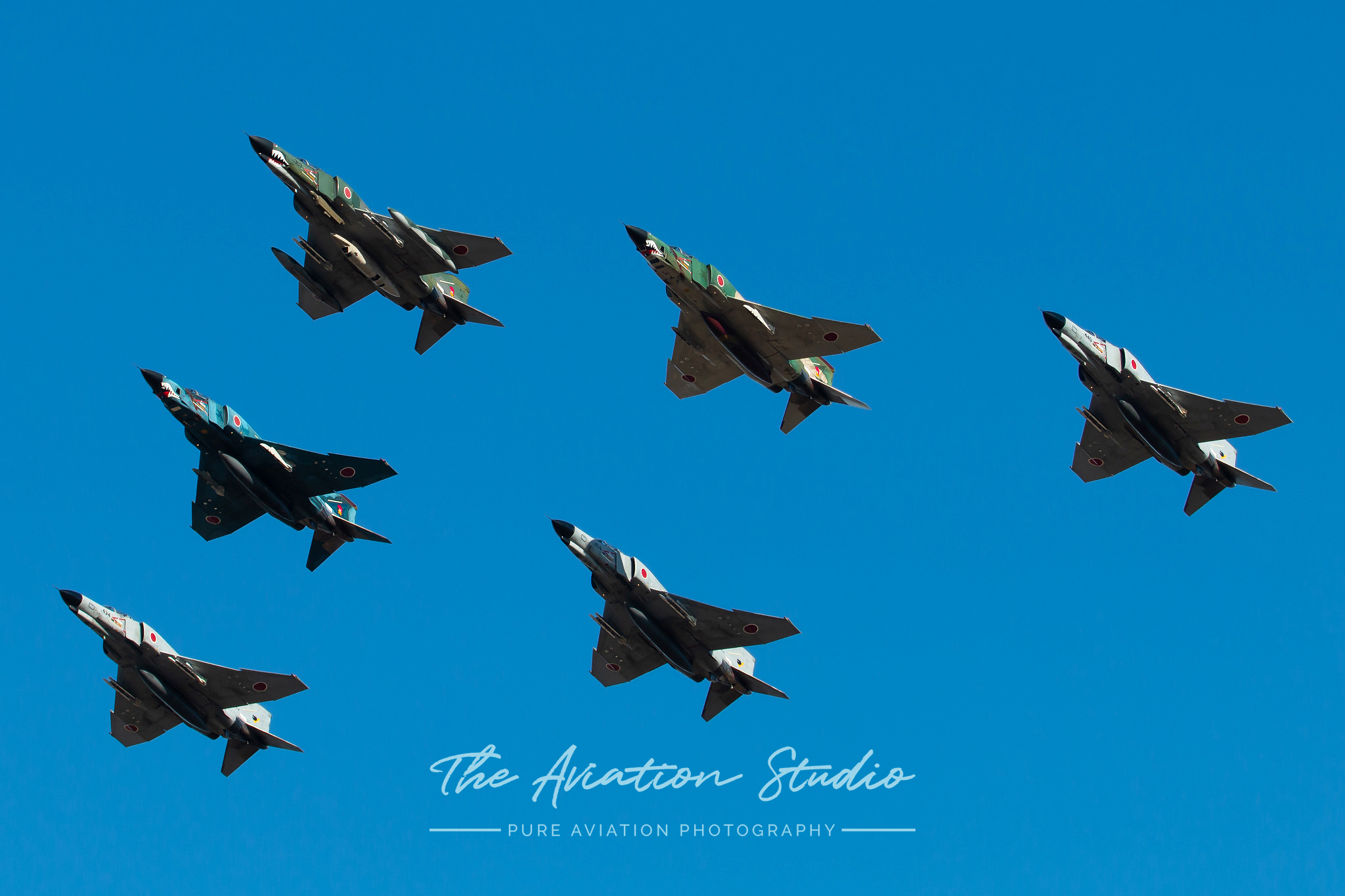
Originally developed as an airfield during the Second World War by the Imperial Japanese Navy, the airbase was reclaimed by farmers following the war. In 1956, the airfield was opened once again by the Japan Air Self-Defense Force much to the dismay of local farmers. The reclamation of land by the JASDF has sparked an ongoing dispute with many farmers refusing to sell off their land.
The most notable example of this is the Hyakuri Peace Towers, located on the western side of the base which served as the shooting location for The Aviation Studio on the first day of the airshow on the 30th of November. Following a very early wakeup at 12:30am, we were soon on the road and at the Hyakuri Peace Towers by 2:00am. Securing one of the last spots along the ladder-packed fenceline, we grabbed a couple more hours sleep in our car before sunrise.
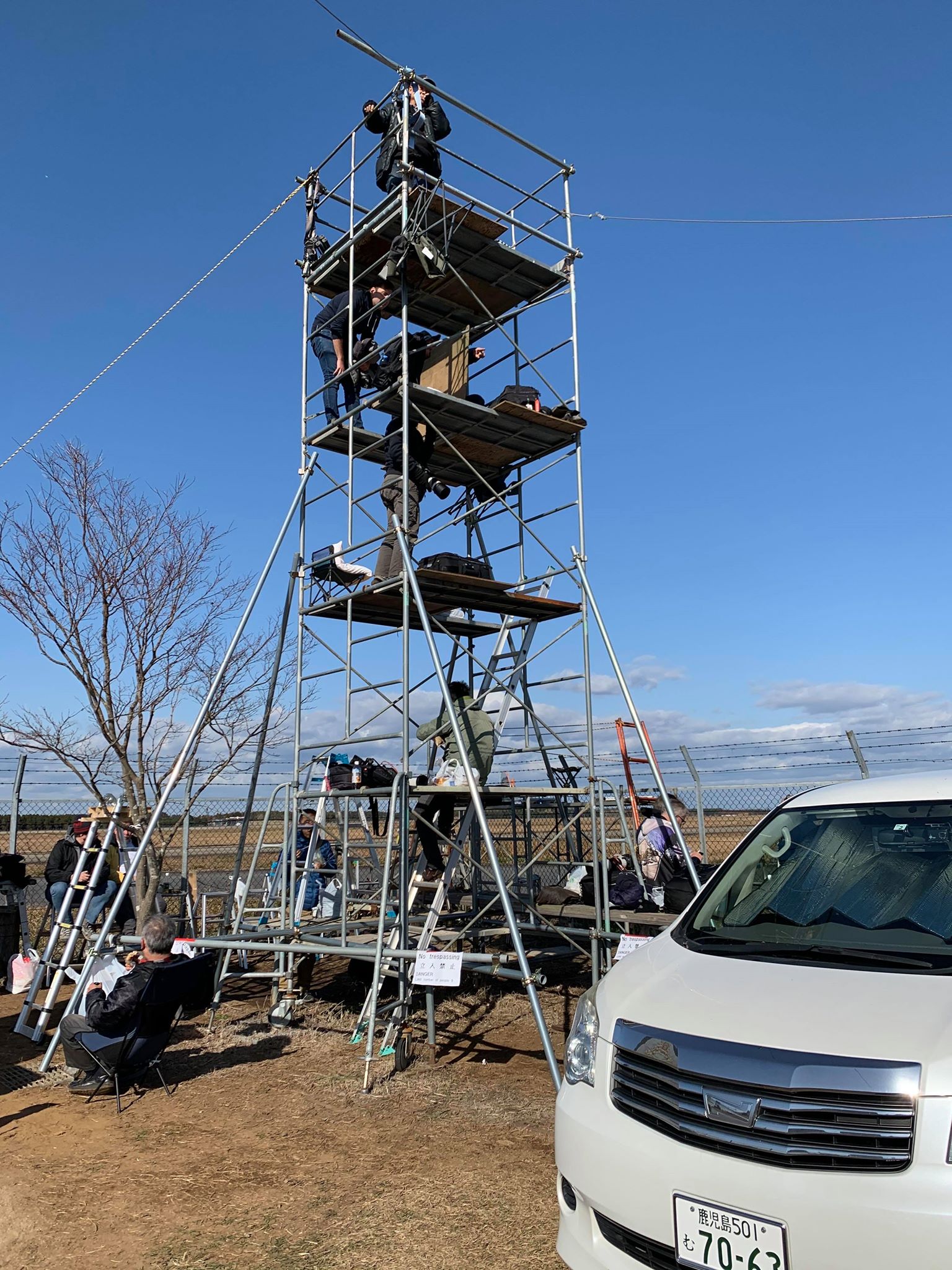
F-4EJ Kai
The star of this year’s air festival was the iconic F-4EJ Kai as they prepare to enter into their final year of operation. Delivered to the JASDF’s 301 Hikotai on the 1st of August 1972, the Phantom has been the cornerstone of Japan’s air superiority and Quick Reaction Alert (QRA) roles. Following the production of two F-4EJ prototypes by McDonnell Douglas on the 14th of January 1971, the first Japanese built airframe flew on the 12th of May 1972. Over the coming nine years, a total of 127 F-4EJs were produced, with production ending on the 20th of May 1981. The last of which; 17-8440, being the last F-4 Phantom II ever produced after 5,195 frames over the course of 23 years.
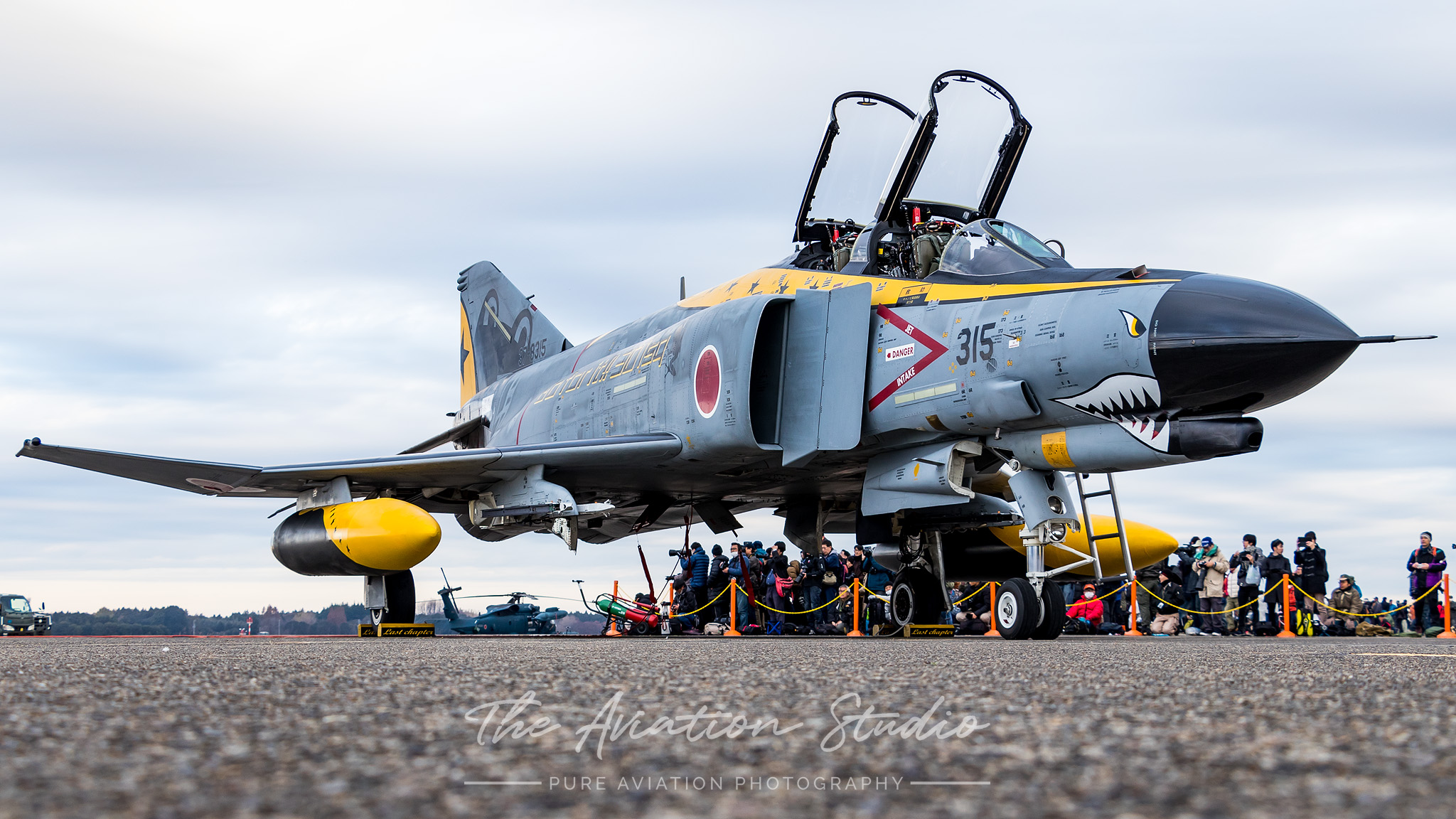
Delivered without air to ground capabilities due to the removal of the AN/AJB-7 bombing computer system and lack of aerial refuelling capabilities, the F-4EJ underwent major upgrades in the 80s. The fleet modernisation covered 96 aircraft with the new designation of F-4EJ Kai. The first modified Phantom made its maiden flight on the 17th of July 1984 with the first operational squadron; 306 Hikotai, receiving the F-4EJ Kai five years later in 1989.
Newly introduced features and system in the Kai’s included the AN/APG-66J pulse doppler radar, AN/APZ-79 IFF and Kaiser HUD. New weapon capabilities included the AIM-7E/F Sparrow and AIM-9L/P in addition to the Mitsubishi ASM-1 anti-ship missiles. This program extended the fatigue life of the Japanese Phantoms from 3,000 hours to 4,500 hours.

As the Phantom fleet continues to dwindle with the introduction of the Lockheed Martin F-35 Lightning II, there are only 26 frames left flying out of the 127 produced. 18 are in service with 301 Hikotai at Hyakuri whilst the remaining 8 (6 F-4EJ & 2 F-4EJ Kai) are with the Air Development and Test Wing (ADTW) at Gifu. Operations are expected to finish up in late 2020 or early 2021 as 301 Hikotai converts to an F-35 squadron with ADTW following suit.
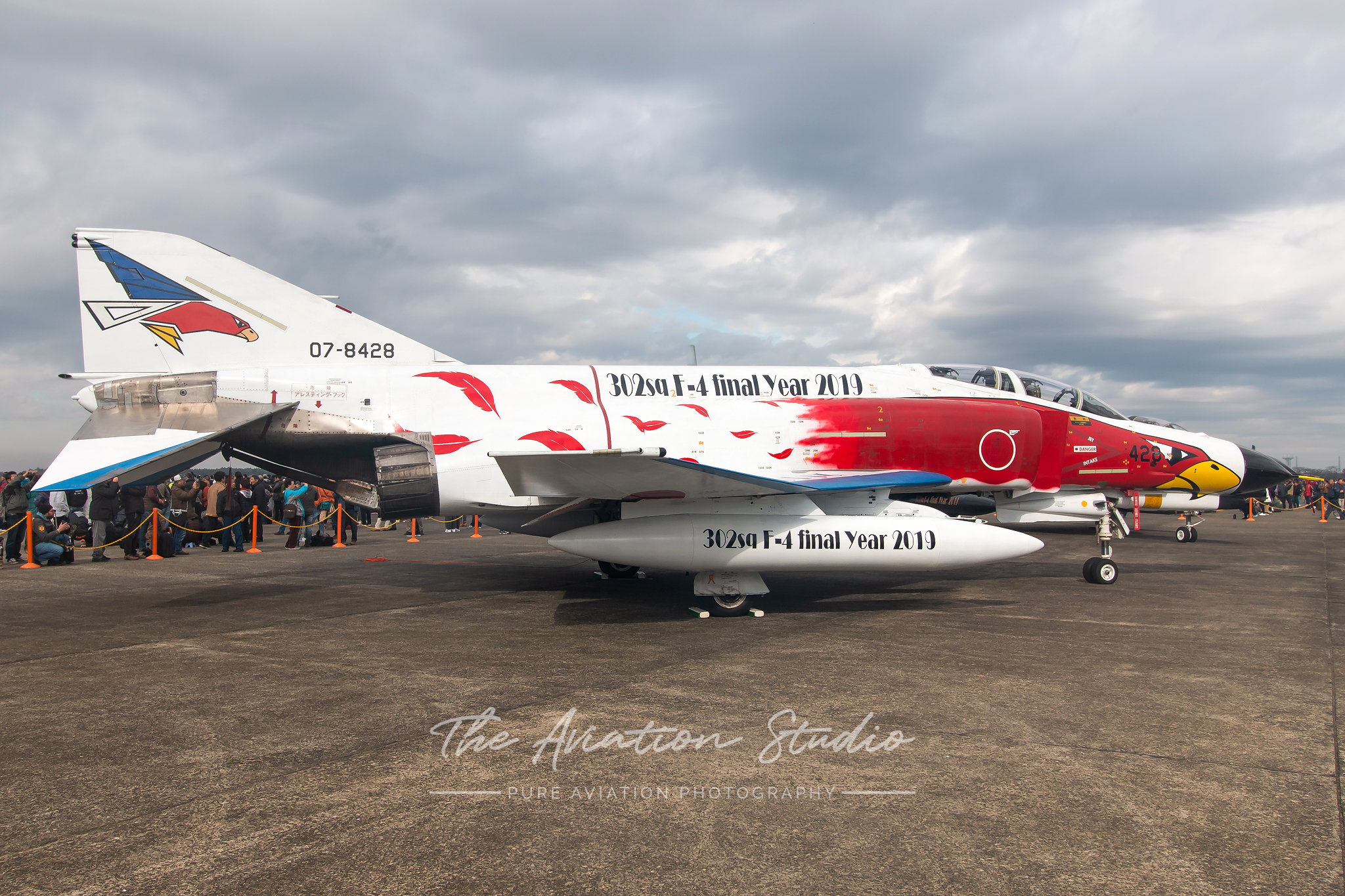
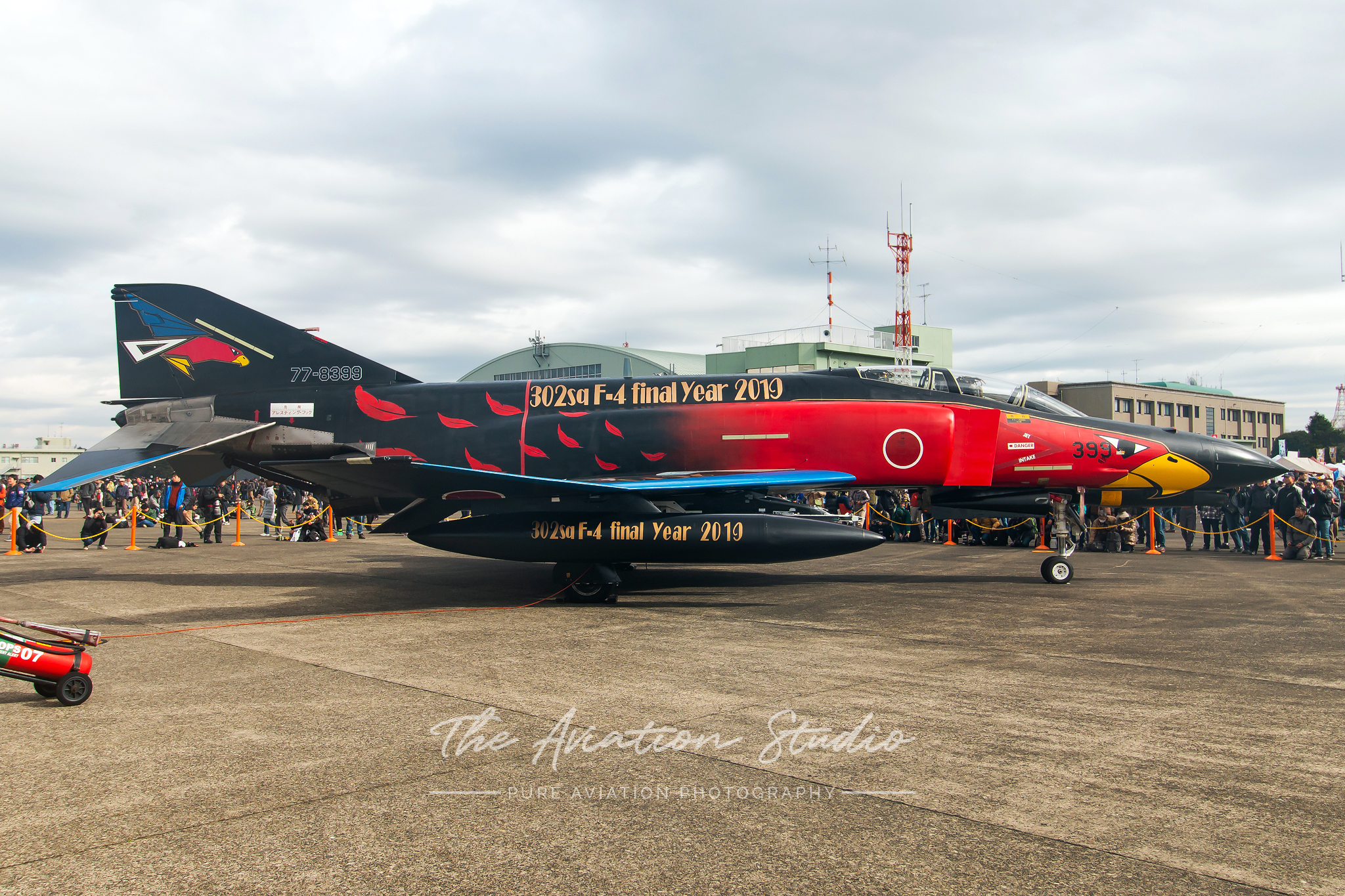


RF4-E Kai & RF-4EJ Kai
Equally sharing the spotlight with the F-4EJ Kai were the RF-4E Kai & RF-4EJ Kai aircraft from 501 Hikotai. Currently in their final months of operation, the Tactical Reconnaissance Squadron will be disbanded in March 2020 following nearly 59 years of operation. A total of nine RF-4s were on display, seven of which are still in active service.

Over the course of eight months in 1974 and 1975, the JASDF received fourteen RF-4Es directly from McDonnell Douglas. These unarmed reconnaissance aircraft were similar to the Japanese’s pre-existing F-4s, with many systems being replaced with Japanese built sensors and equipment. To bolster the reconnaissance fleet, a total of seventeen F-4EJs were converted to RF-4EJs. The EJ variants can be easily distinguished from the E variants with the retention of the M61 Vulcan located in the nose of the aircraft, compared to the camera suite in the E variants. Whilst the RF-4EJs lacked the internal camera system, they could still carry three different reconnaissance pods.
Much like the F-4EJ Kai program, the RF-4s underwent a similar modernisation process. Key changes were the upgrading of the AN/APQ-99 radar system to the AN/APQ-172, alongside the J/APR-2 RWR system with the new J/APR-5. These updated were designated the RF-4E Kai and RF-4EJ Kai.

There are currently seven RF-4 frames still in operation — five RF-4E Kai and two RF-4EJ Kai — out of a total of 31 RF-4 aircraft. With the phasing out of the RF-4, the JASDF would have been left without a reconnaissance aircraft platform. However, Lockheed Martin announced in 2007 that they will be producing advanced synthetic aperture radar (SAR) external pods to be used on existing F-15J/DJ aircraft.
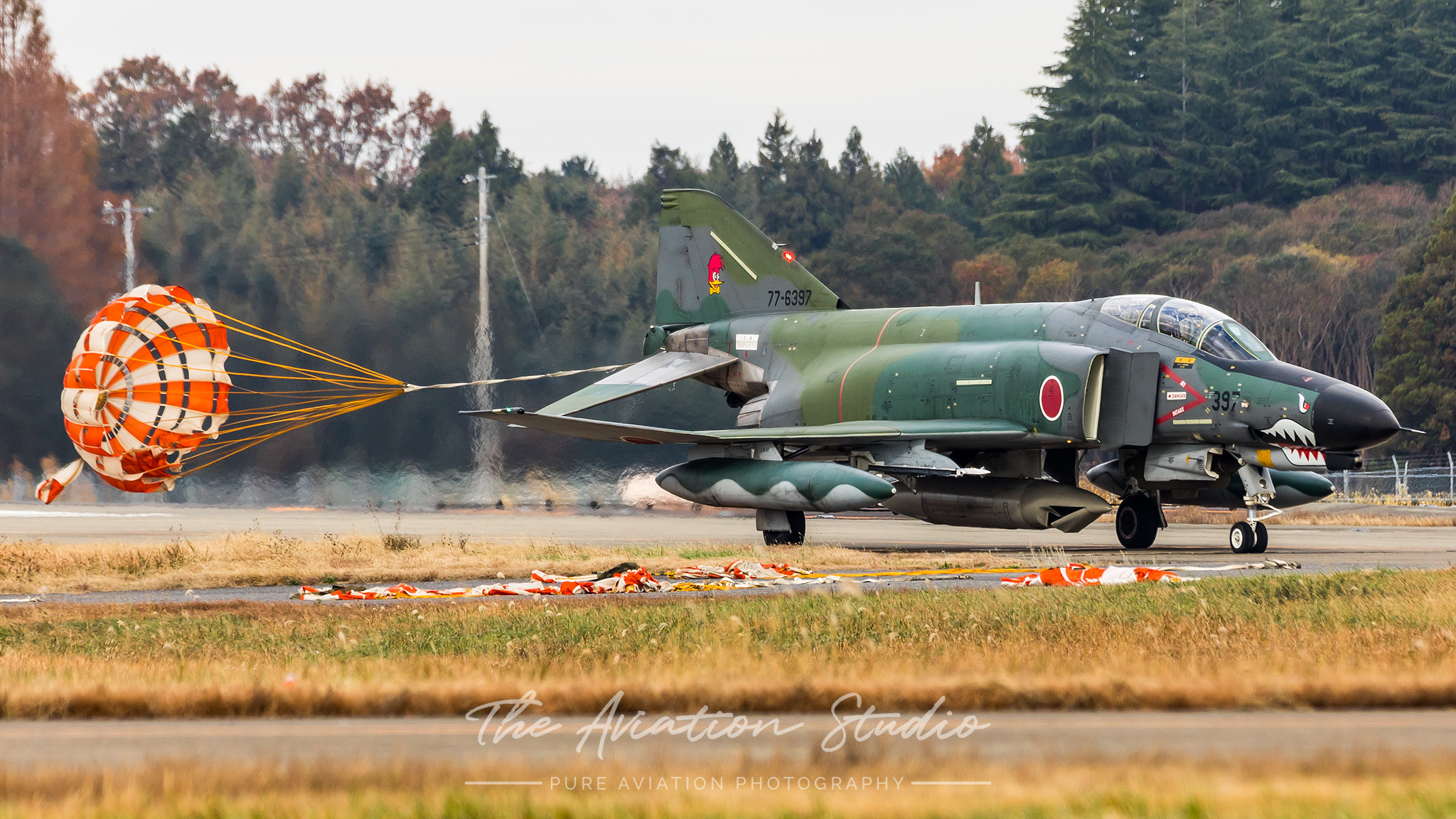
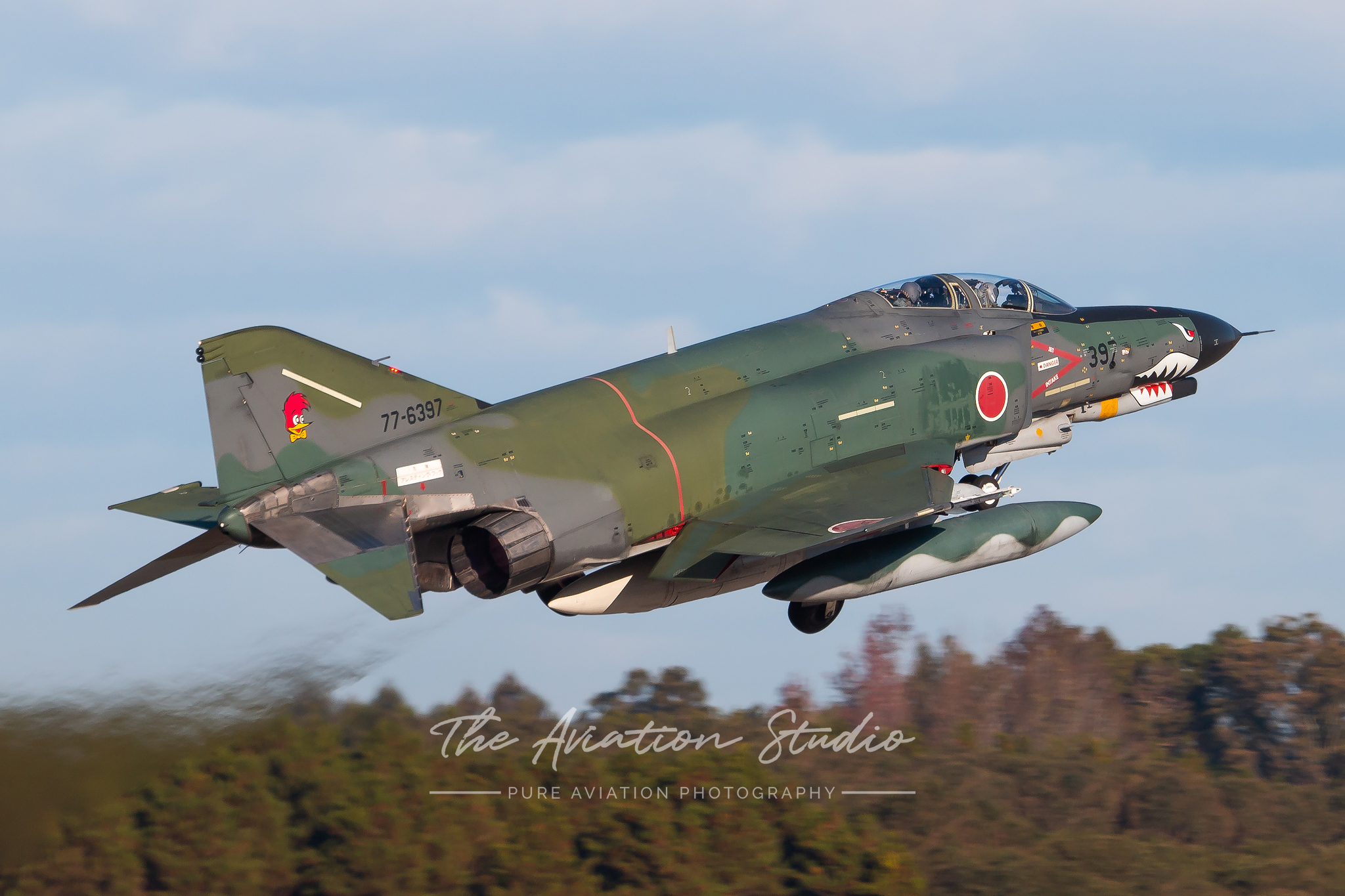
F-15J Eagle
A once longtime resident of JASDF Hyakuri, the F-15J Eagle provided a thrilling handling demonstration in the middle of the flying displays. Two F-15Js from 303 Hikotai were flown in from JASDF Komatsu for the weekend, with one — 32-8827 — being used for the handling demonstration on both days whilst 12-8803 remained on static display.
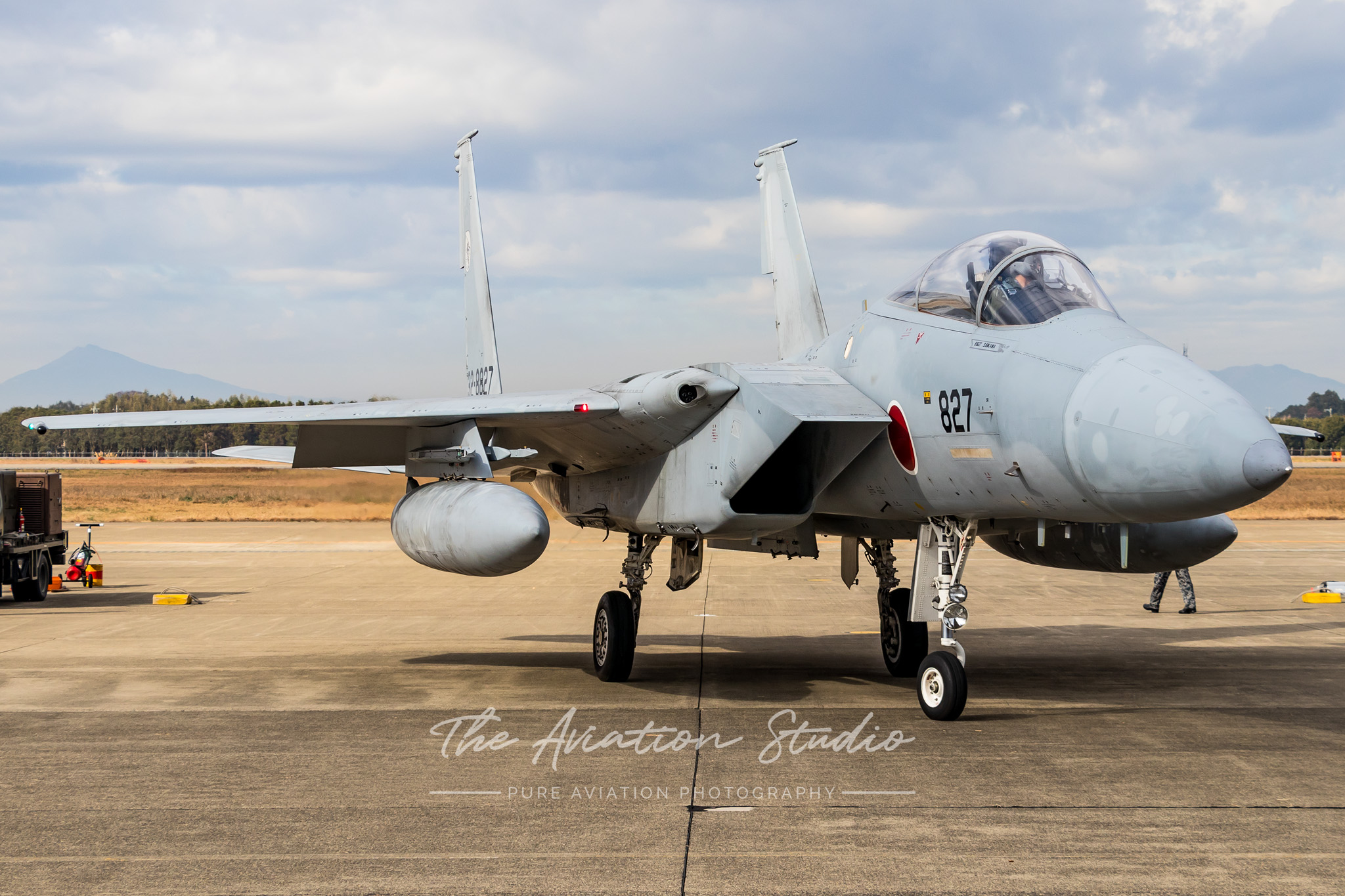
With the exclusion of the Blue Impulse, it is very uncommon for the JASDF to provide flying displays of aircraft away from their home base. However given the Eagles’ 31 year history at Hyakuri, it has made an appearance at the previous two Hyakuri Air Festivals.
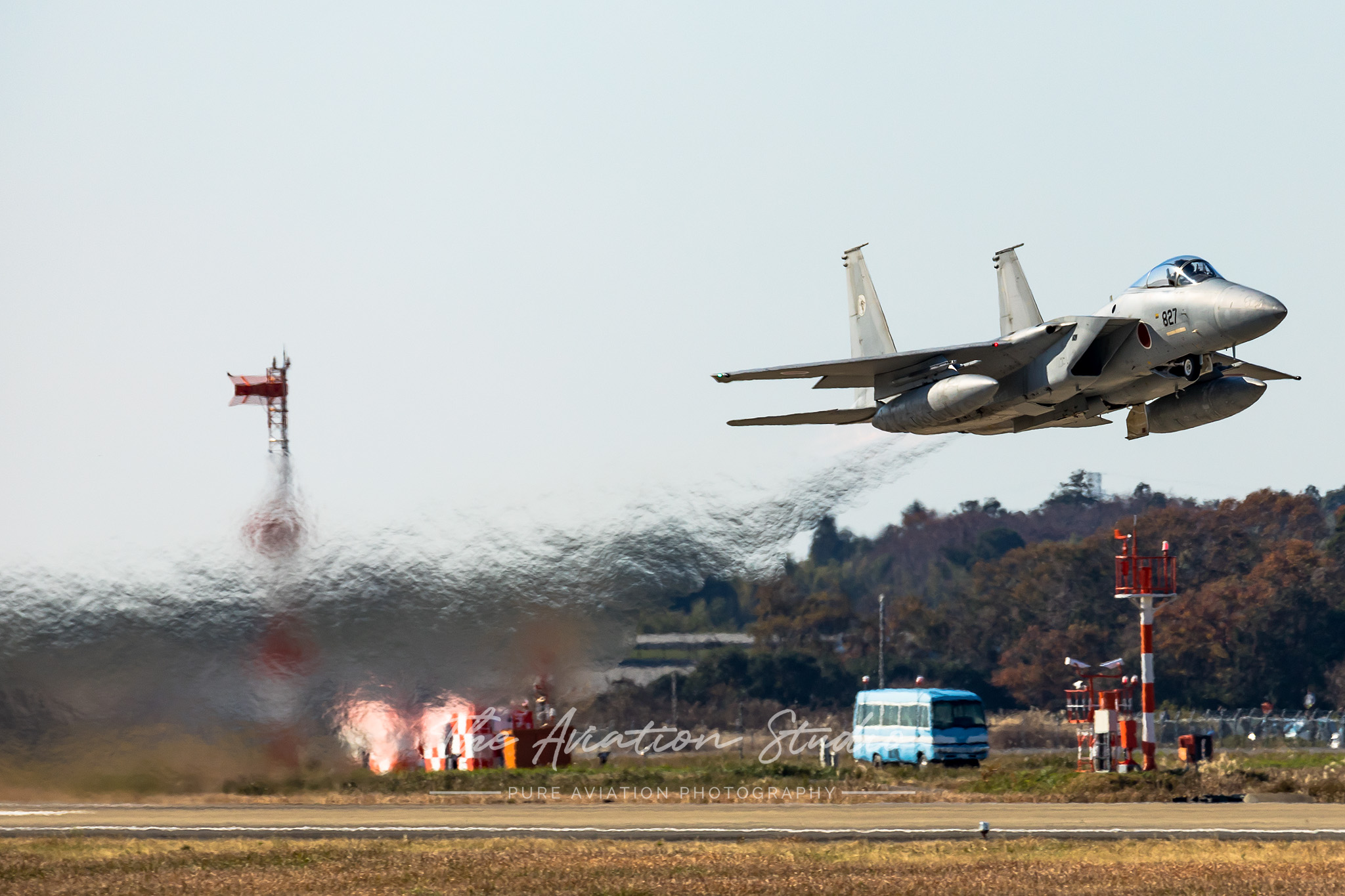
Previous F-15J/DJ squadrons at JASDF Hyakuri were:
- 204 Hikotai 1985-2009 (Now based at JASDF Naha)
- 305 Hikotai 1993-2016 (Now based at JASDF Nyutabaru)
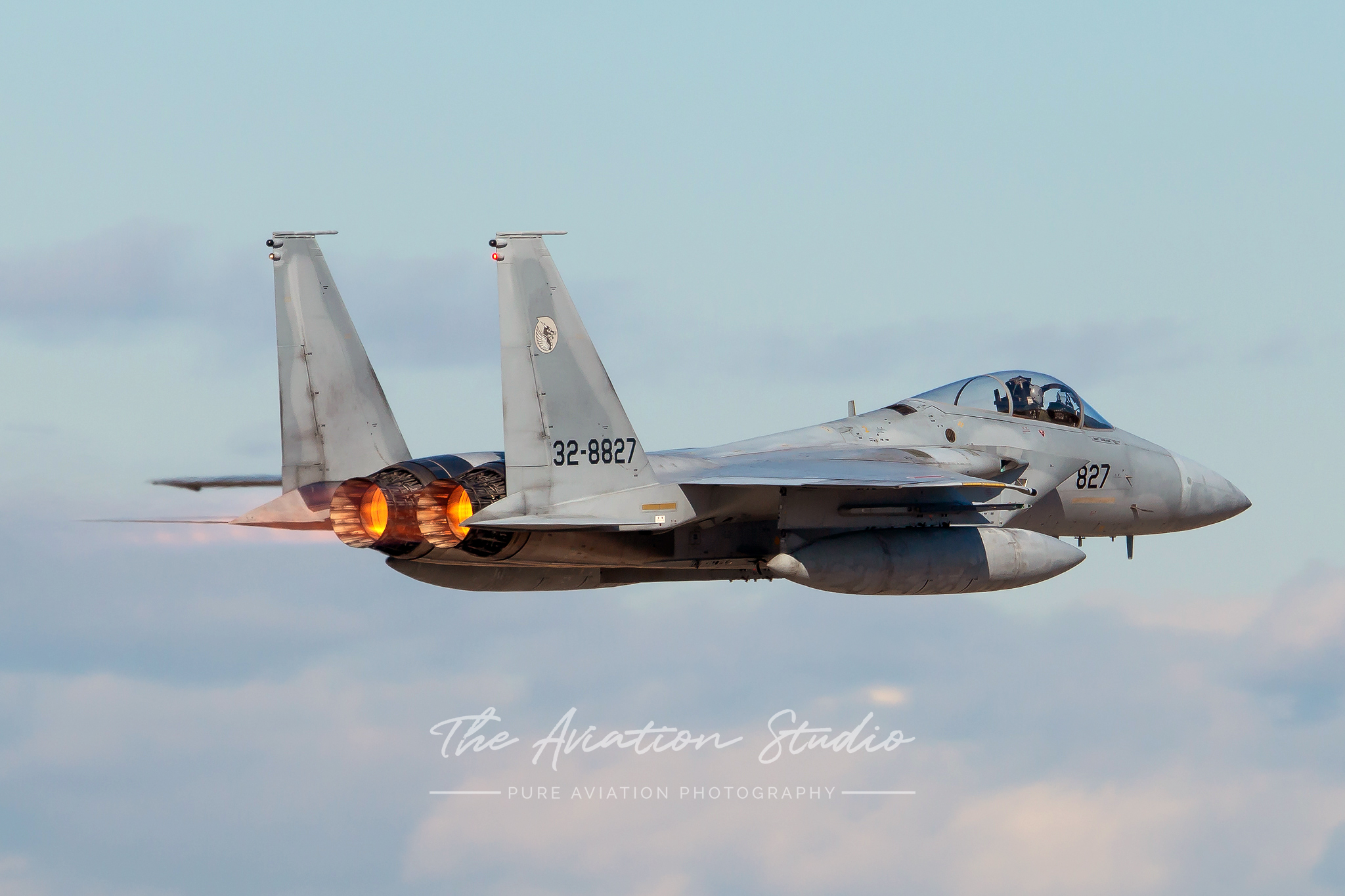
The short and sweet display provided a series of passes to spectators with full afterburners, minimum radius turns and a dirty pass.
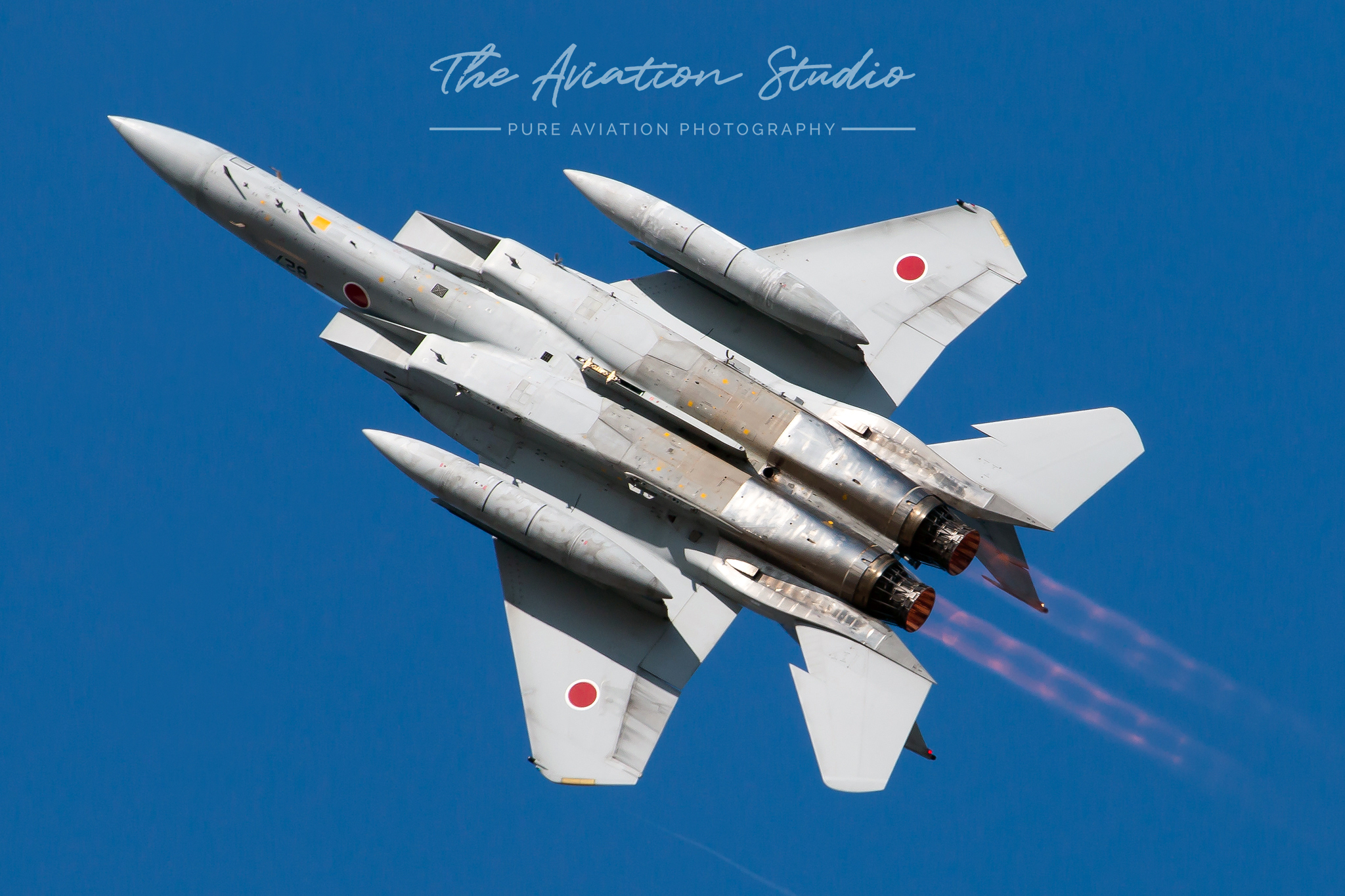
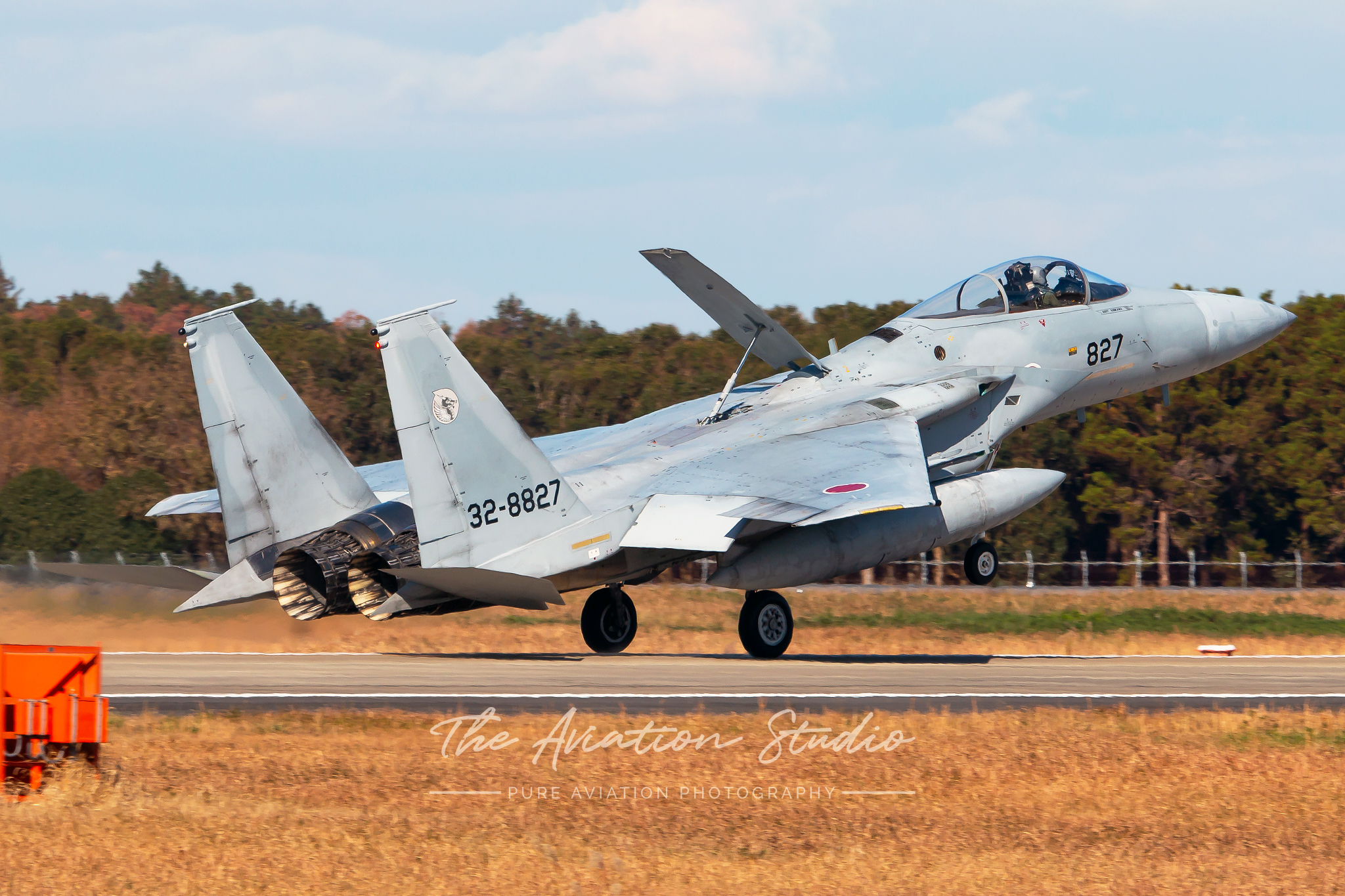
Blue Impulse
Another highlight of the Hyakuri Air Festival was the JASDF’s Blue Impulse aerobatic display team. Based out of JASDF Matsushima, the Blue Impulse are equipped with eleven Kawaski T-4 intermediate trainer aircraft. Six aircraft are utilised for their displays with the remainder cycled through training, maintenance and display use. The aircraft are characterised by their vibrant white and blue paint scheme.

Founded in 1960, the Blue Impulse performed their first official exhibition flight on the 4th of March at JASDF Hamamatsu. Utilising the F-86 Sabre, the team switched to the Mitsubishi T-2 in 1981 following 545 displays in the Sabre, with their first exhibition flight in July 1982. Fourteen years later in 1996, the team switched to their current platform; the Kawasaki T-4. The Blue Impulse has primarily only displayed in Japan with their international debut at Nellis AFB, Nevada, USA in 1998. They are also one of only a handful of squadrons currently flying the T-4. Engine issues have grounded much of the fleet with only an estimated 26 out of 202 airframes in flying condition (as of September 2019).
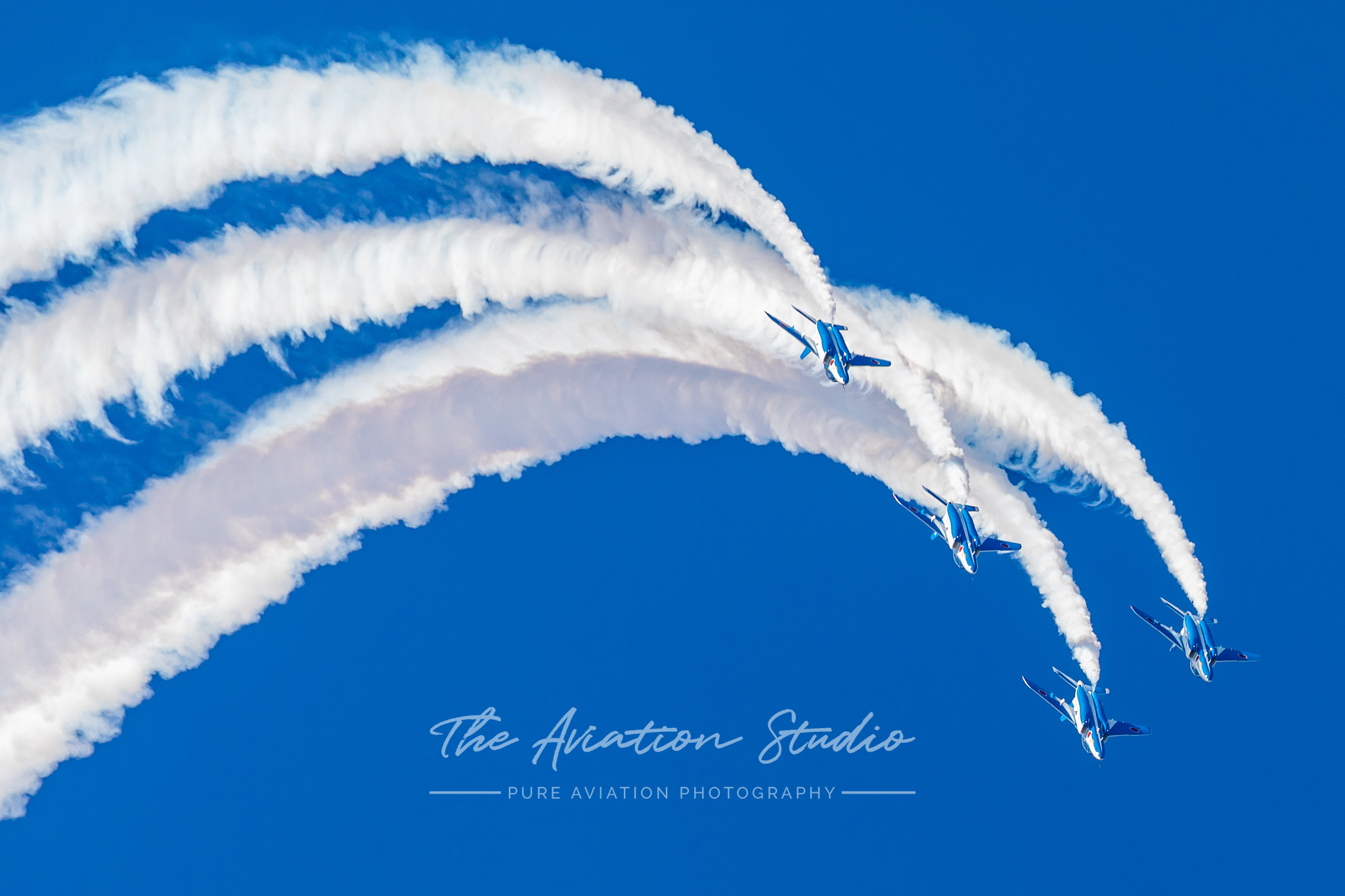
A total of seven T-4s arrived into Hyakuri on Friday the 29th of November in preparation for the show with six numbered display aircraft and an unnumbered spare.
- No. 1 Leader — 36-5697
- No. 2 Left Wing — 26-5686
- No. 3 Right Wing — 66-5745
- No. 4 Slot — 06-5787
- No. 5 Lead Solo — 26-5690
- No. 6 Opposing Solo — 16-5666
- Spare Aircraft — 26-5692
Unfortunately Saturday’s display was limited to five aircraft as No. 3 aborted the display after initially lining up on the runway. The bad luck continued through to the Sunday with low cloud limiting the display. Nonetheless, the Blue Impulse put on a thrilling show lasting forty minutes from the first takeoff to last arrival! The team made several dozen passes down the crowd line demonstrating their precision formation skills whilst the two solo aircraft showed off the T-4s handling characteristics and was personally one of my highlights from the weekend.

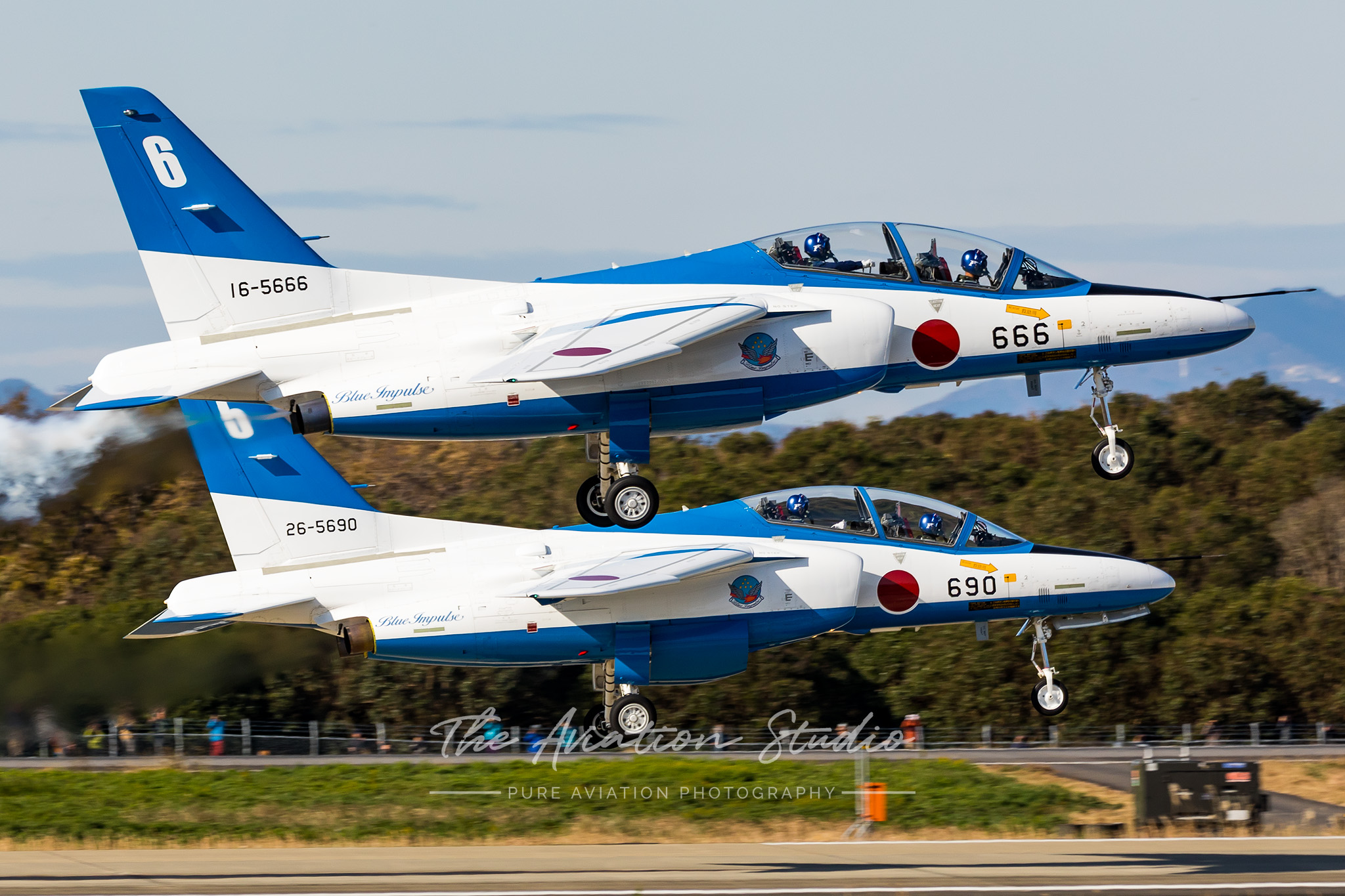
UH-60J & U-125 SAR Demo
Providing airborne search and rescue (SAR) capabilities, the JASDF Koku Kyunandan (Air Rescue Wing) were on display with their UH-60J, U-125 and CH-47J. Headquartered out of JASDF Iruma, the Koku Kyunandan are split into ten air rescue detachments (plus one training detachment) operating the UH-60J and U-125 in addition to four airlift squadrons operating the CH-47J.
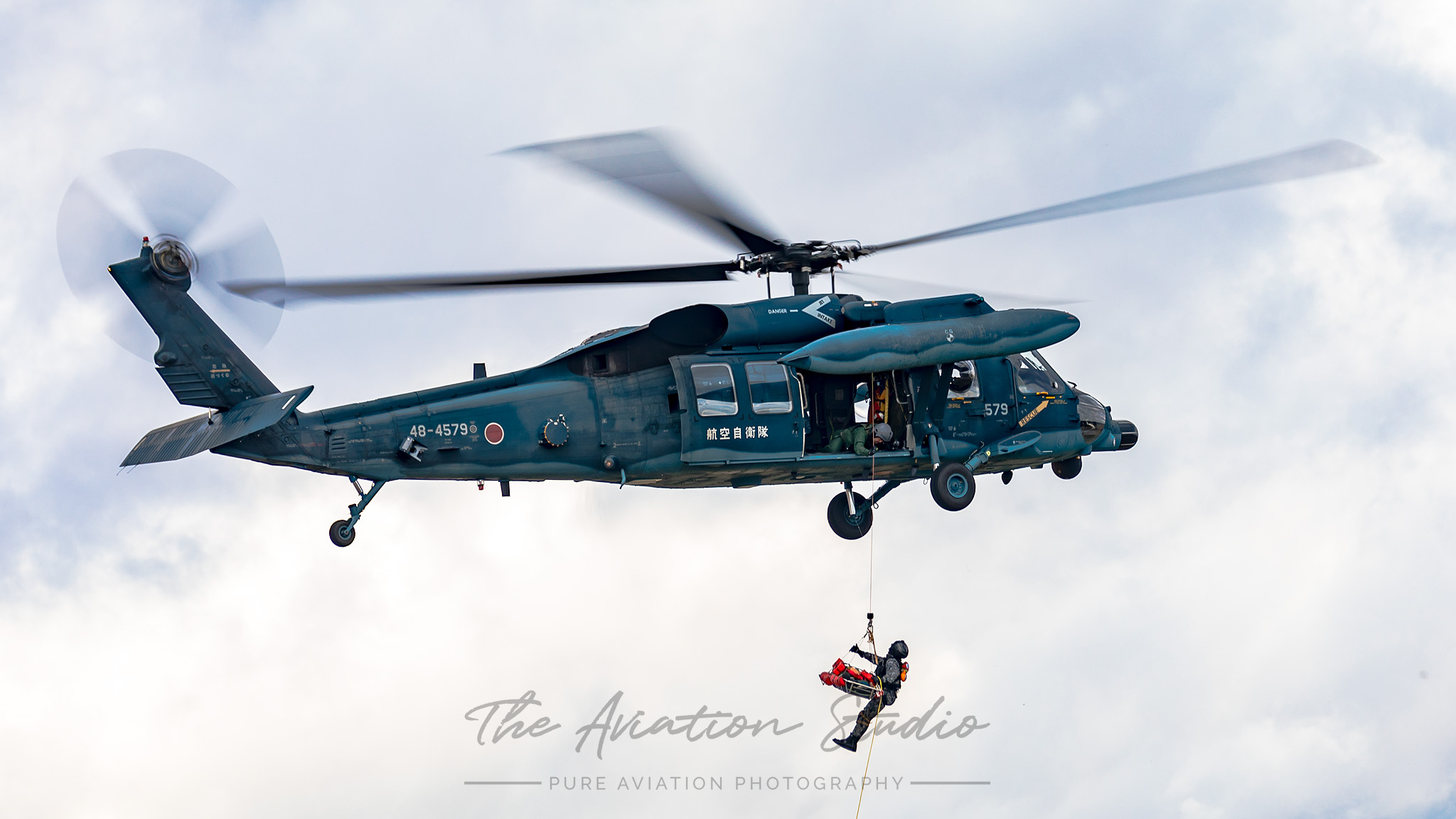
To demonstrate their search and rescue capabilities, the Hyakuri detachment showcased their ability to locate and extract people with their U-125 and UH-60J. Following several low-level passes, the U-125 dropped a parachuted emergency equipment kit. This dropping system is accessed through the main wheel bay with the gear lowered during the drop pass. Following this, the UH-60J dropped and extracted two crew members with a single stretcher.

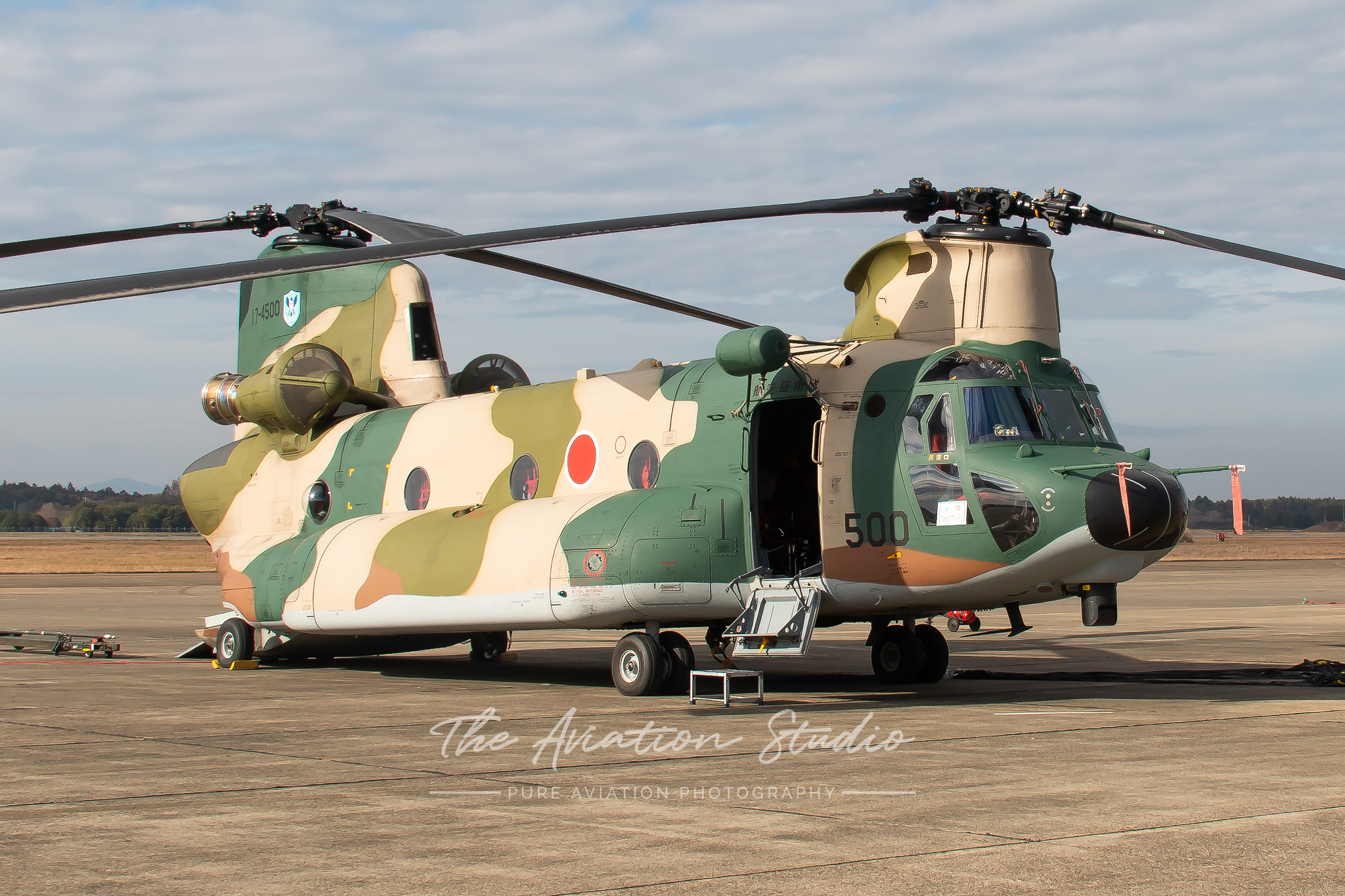
Static Displays
Accompanying the flying displays were nineteen aircraft on static display ranging from training aircraft through to fast jets and transport. Whilst most aircraft were based out of Hyakuri or local bases such as Atusgi (P-1) and Iruma (CH-47 & U-4), static display aircraft came from as far as Miho (C-2) and Misawa (F-2).

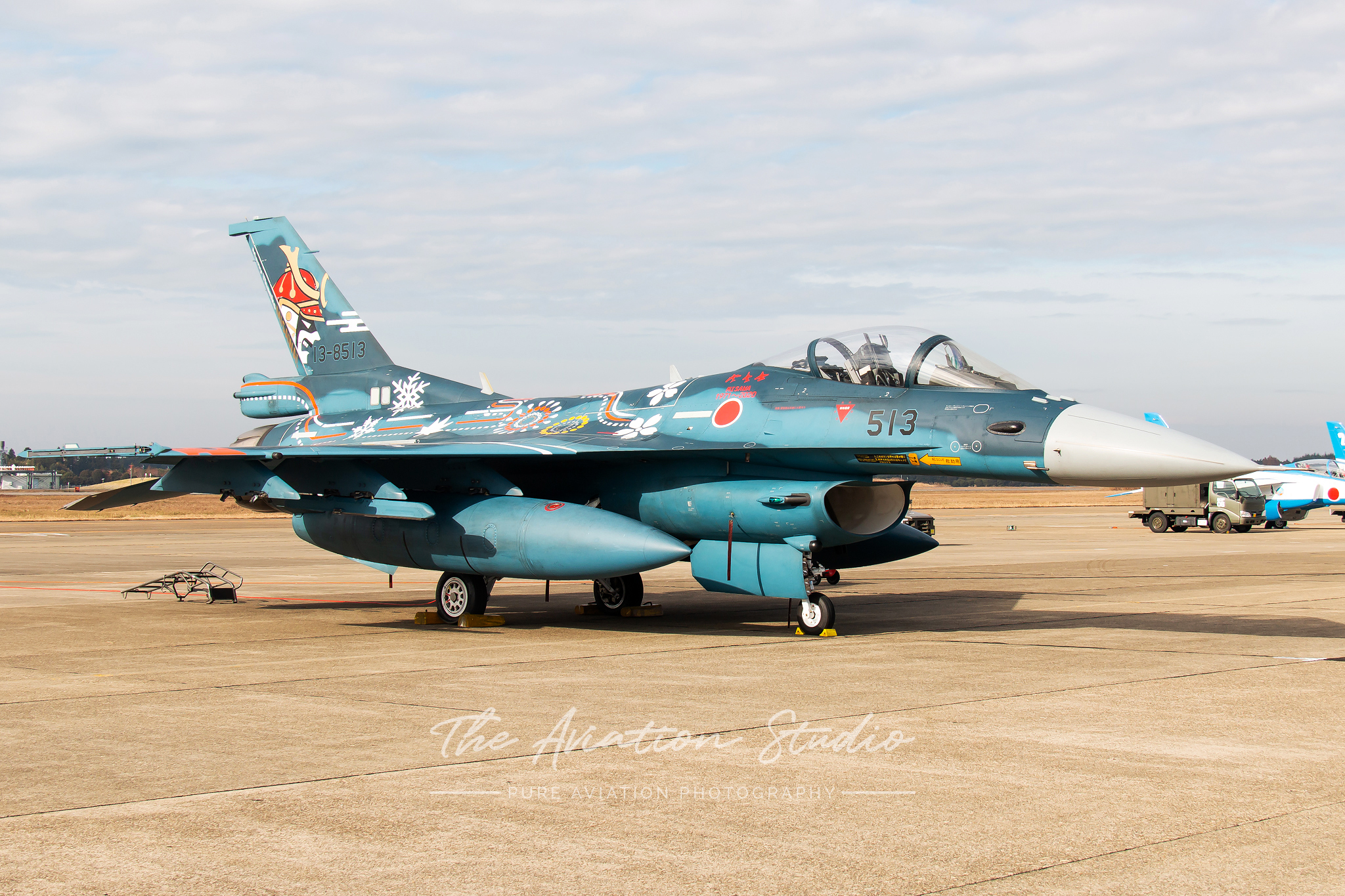
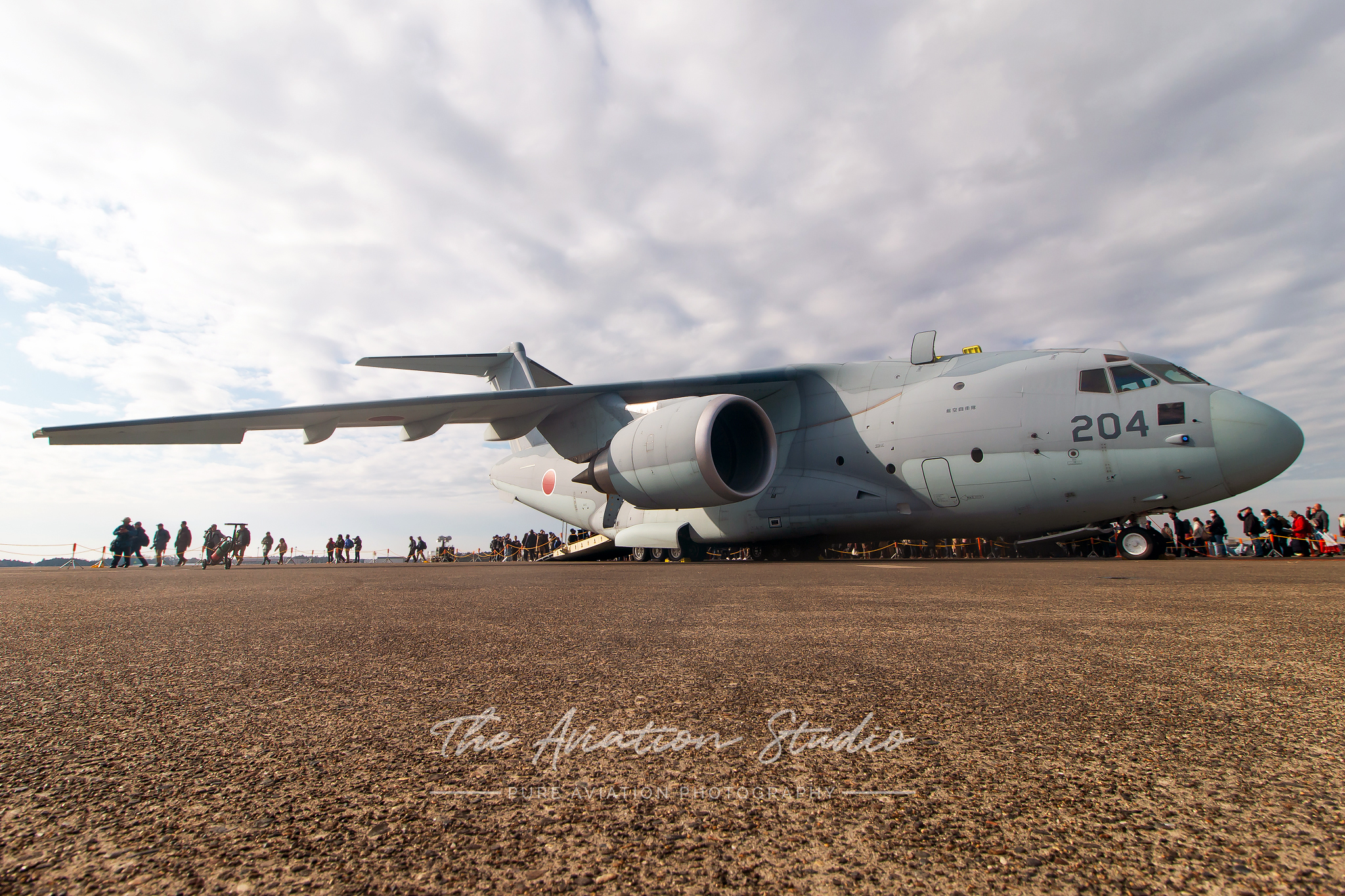
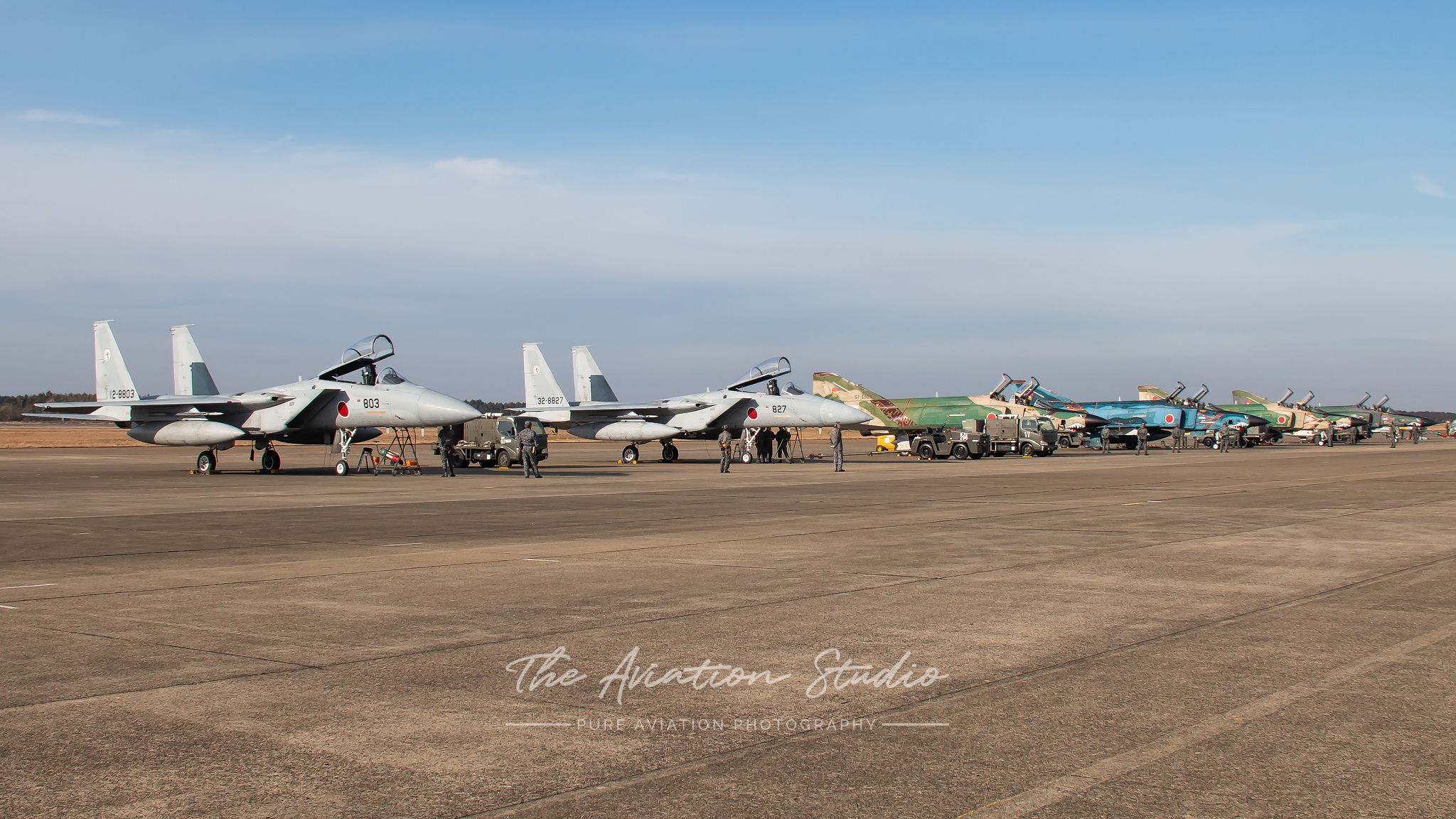
Want to read more about the JASDF? Check out our article on Exercise Bushido Guardian 2019 as the RAAF deploy to northern Japan for the first joint air combat exercise between the two countries.